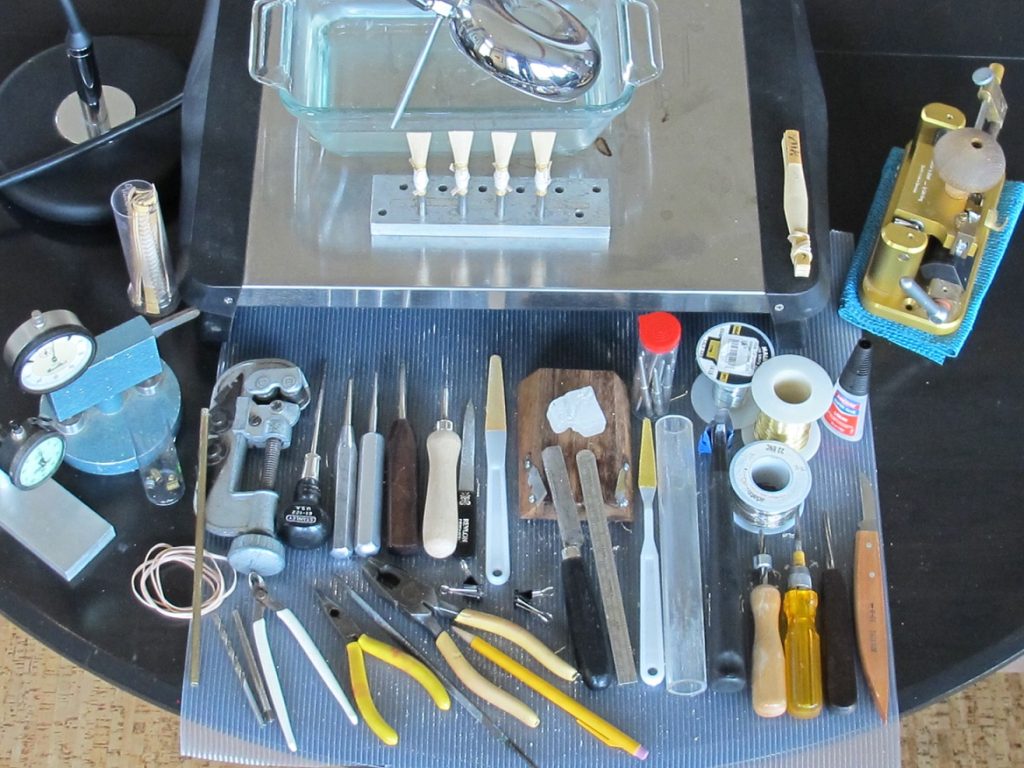Selecting a Reed
- Slur up tests
- Test E2-C3
- Test C3-C4
- Test D3-D4
- Test Eb3-Eb4
- Inspection/adjustment
- Will butt end fit on bocal?
- Is it symmetrical?
- Blade strength balance test
- Tip opening/closure
- Blow for tone
- Wire inspection test
- Throat inspection
- Tip opening
- Crow test
- Tap test
The Crow Test
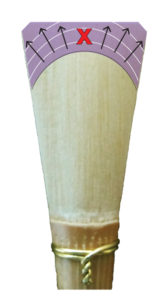 Dry crow
Dry crow- Pitch of crow
- Split octave
- Full crow
- In and out crow
- Adjustments: sanding or scraping
- Tap tests
Tests for Open F through C2
The Big Five
- Pitch centering
- Play the note where it’s comfortable.
- Check tuner.
- Make appropriate adjustments.
- Ear plug test
- Hold the note in tune with tuner.
- Plug ear.
- Note if pitch drifts sharp or flat.
- Stability and articulation
- Note if pitch changes with dynamics changes (pp – sffz) and repeated articulation.
Six Adjustment Choices
If Sharp
|
If Flat
|
Tip Taper and Gradient

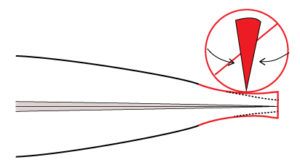
Corner Bend Test
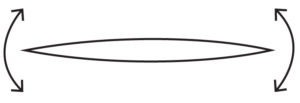
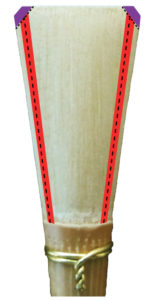
Problem Tip Openings


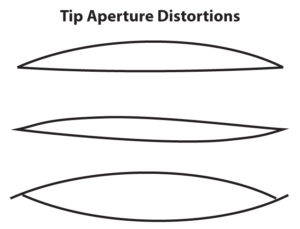
Tests for Fork Eb and D, the Nexus Note
- Achieve balance between soft, “bare” Fork Eb and D pitch center.
- Nexus note ear plug check (D2, D3).
- Cross checks (relatives) for Eb:
- C3 Harmonic
- Ab-Bb Trill
- Fork Bb3
Key and Pad Stop Adjustment Points for Tuning
- Adjust from bottom up, first open tone holes (F, G, A), then closed tone holes (F#, Ab, Bb).
- 5mm average from pad (raised end) to tone hole.
- Tuning tape??
- Pad height vs. tone hole size.
- Shim or sand paper?
- Key and pad stop adjustment points.
- U-Tube gasket.
Ten Reasons to Clip the Tip
Reasons to clip tip/shorten vibrating length (tip to 1st wire):
- E2 is unstable at forte or pianissimo.
- F2 is unstable at forte or pianissimo.
- C#2 or C#3 is unstable at forte.
- Alternate E2 is flat.
- Won’t slur across break to C3 from open F.
- Can’t slur up easily to F3 from F2.
- Harmonic fingerings are still flat after working rails.
- Pitch of regular and alternate F#3 don’t match.
- Can’t slur up to alt high C, D or Eb.
- The reed still plays flat after adjustments and reaming.
Level 2: Middle Register Method
Harmonic Convergence

- Compare harmonic and other test fingerings to standard fingerings.
- Goals:
- Match pitch of standard fingerings to harmonic/test fingerings.
- Eliminate fuzzy articulation and croaking/split tone.
- Tuning is accomplished by scraping or sanding in a note’s tuning zones:
- Channels (center of channel or neighboring spine zone)
- Rails
- Tap test: for channel, high pitch first; for rail, low pitch first.
- Requires back and forth adjustments between channel, rail, and spine zones.
- Cross checks with neighbors and related tests.
- Pitch deviation between standard and test fingerings directs adjustments.
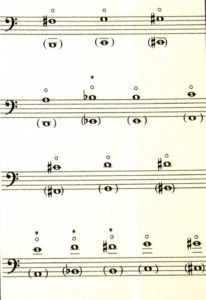 Harmonic Fingerings
Harmonic Fingerings
- Fundamental note is a 12th below the note you are comparing and tuning, 3rd partial.
- Half-hole or register key assistance.
- *Alternate fingering test notes.
Pitch Tendencies in Middle Register
- Sharp tendency notes: F#, G, Ab
- Lowering pitch of harmonic lowers pitch of standard fingering.
- Flat tendency notes: tuning A, Bb, B, C, C#, D, Eb
- Lowering the pitch of harmonic/test fingering raises pitch of standard fingering.
- Non-harmonic test notes include French E, alternate F, and F#, comparing F# standard to alternate.
Level 3: Upper Register Tunings

- Left-hand only slur up tests to identify good high note reeds.
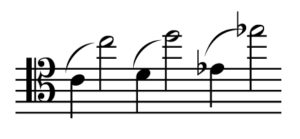
- G and Ab harmonic tunings are critical.
- G fine tuning (B-G test).
- Left-hand only A-B-C test.
- C to Bb slur down.
- Crosschecks.
- Additional techniques.
The Final Tests
| Test A |  |
| Test B |  |
| Test C | 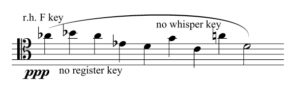 |
Mark’s Reed Tool Desk
